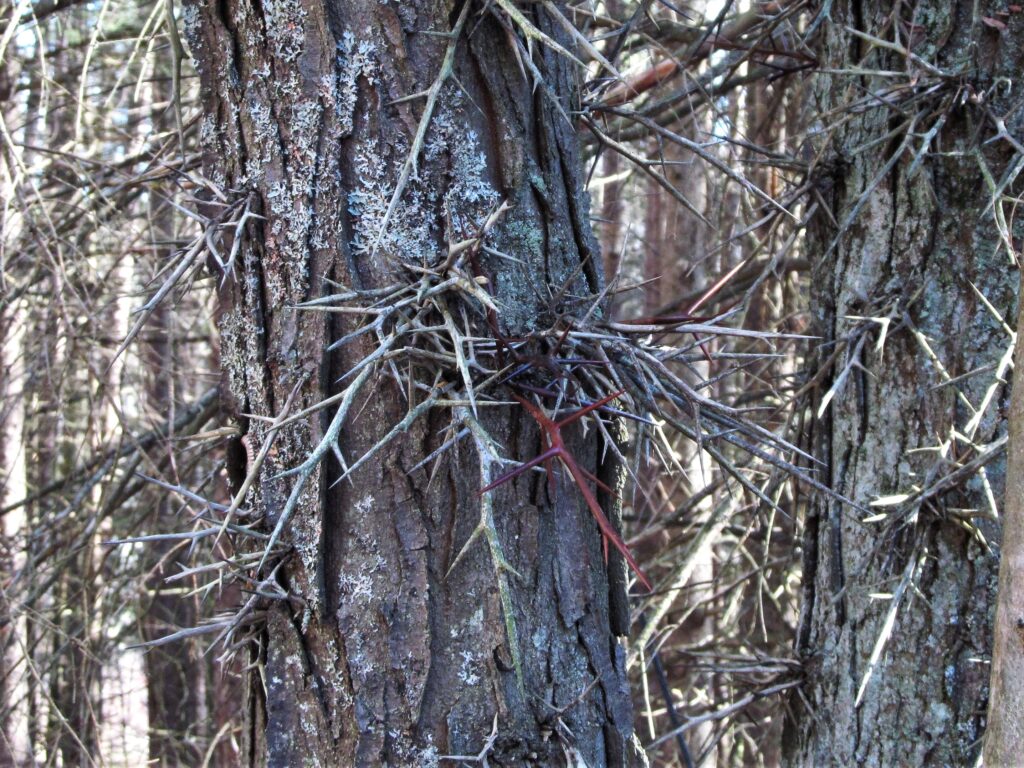
In nature, evolution occurs continually within each species, but the rate of evolutionary change depends on numerous variables. In species with extremely fast reproductive rates (e.g., bacteria, which can divide several times per hour) and high (but not too high) selective pressures such as a high level of predation, the rate of evolutionary change in a specific trait can be surprisingly fast, occurring on timescales of days (in bacteria) or a few years (in mice). Conversely, in species that reproduce slowly and have traits with low selective pressures, evolution can seem to stand still. An example of evolution at a near standstill is found in one trait of the honey locust tree (Gleditsia triacanthos)—their formidable thorns!
Honey locust trees sport large thorns (I have one in my office that is 13 inches long) that are extremely hard (the thorns were used centuries ago as nails). The largest thorns originate in the bark and surround the trunk of the tree. The thorns evolved millions of years ago during the Pleistocene, the geological epoch that lasted from about 2.58 million to 11,700 years ago, encompassing Earth’s most recent period of repeated glaciations. The Pleistocene ended at the end of the last glacial period.
The large thorns are believed to have evolved to protect the trees from browsing Pleistocene megafauna such as giant ground sloths, wooly mammoths, and mastodons. All of North America’s megafauna that were a threat to the honey locust went extinct not long after the end of the last glacial period. So, why do the trees continue to grow such large thorns as protection against species that have long gone extinct? The answer is the slow rate of evolution when there is little or no selective pressure to change. Without selective pressure to reduce, modify, or eliminate the thorns that once bestowed great benefit to the trees, they have been retained but serve little purpose.
Honey locust trees are not considered native to New York. While the described natural range of this tree extends only as far north as northeastern Ohio and northwestern Pennsylvania, I have encountered several honey locust trees in southern Chautauqua County and eastern Erie County. My first encounter with one was near the Roger Torey Peterson Institute in Jamestown. I was hiking on a trail that crossed a swampy area and slipped on a wet log. My hands went outward as I tried to catch my balance, and my left hand was impaled on the thorns of a small honey locust. The pain was intense, but the experience opened my eyes to this fascinating tree with an interesting history.
